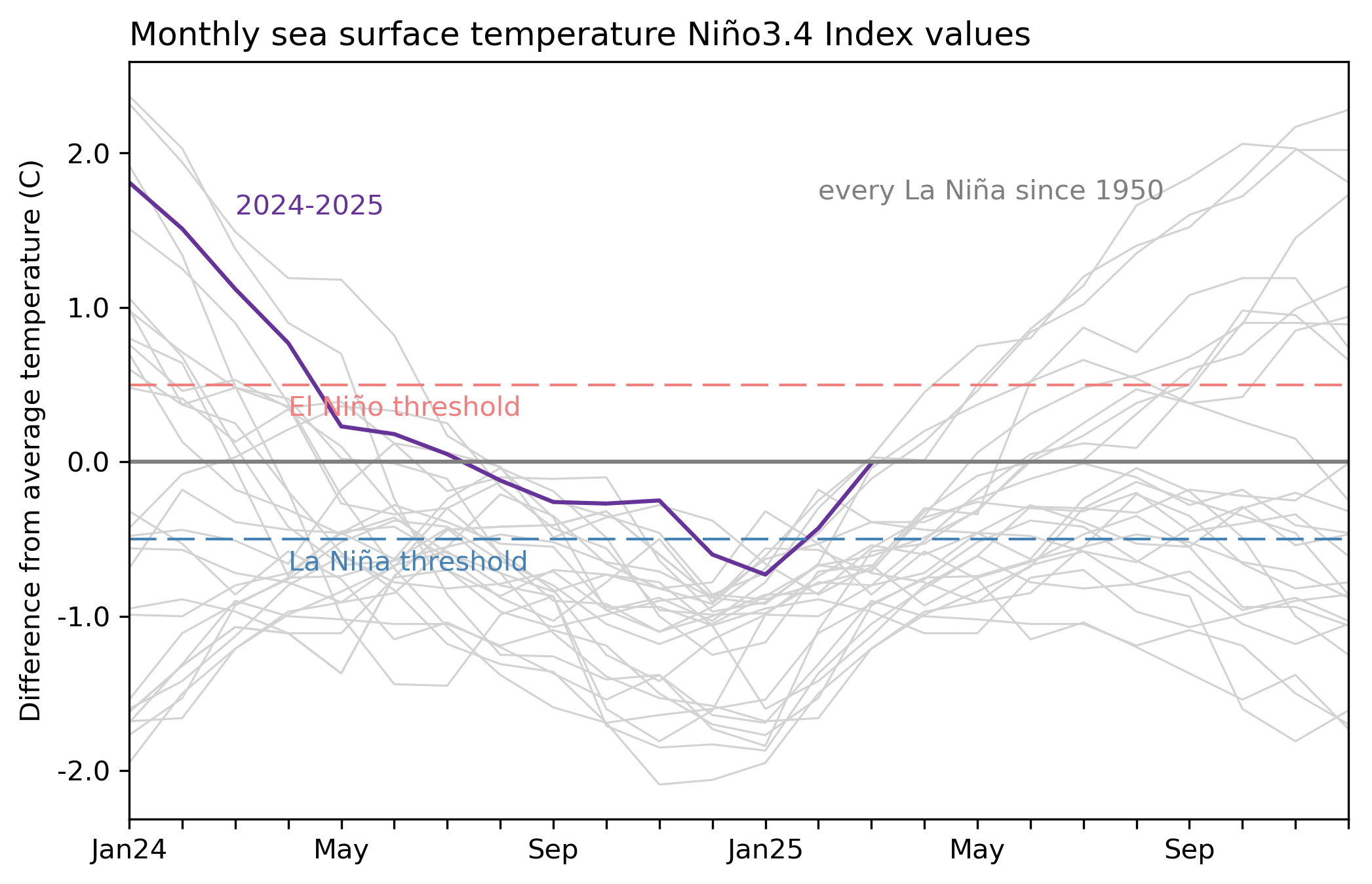La Niña didn’t stick around for long. After just a few months, La Niña conditions have subsided and the eastern tropical Pacific has entered an ENSO-neutral phase that’s expected to continue in the Northern Hemisphere until summer. That might be a lot of buzzwords, so what does it actually mean?
La Niña and El Niño are the two main phases of the El Niño/Southern Oscillation (ENSO), an alternating pattern of sea surface temperature and atmospheric changes in the tropical Pacific Ocean.
El Niño is the warm phase of a climate pattern, marked by above-average sea surface temperatures in the eastern tropical Pacific Ocean. In contrast, La Niña is the cool phase, with below-average temperatures. Although these phases originate in the Pacific, their influence extends globally, shaping weather and climate patterns such as temperature shifts, rainfall, hurricanes, and tornado activity. Earth swings between these two phases in an irregular cycle, usually every two to seven years, with a “neutral” stage in between.
This latest La Niña phase was very brief, just as the National Oceanic and Atmospheric Administration (NOAA) predicted late last year. A cooling La Niña emerged in the tropical Pacific in December 2024, but sea surface temperatures in the eastern Pacific have since risen to such an extent that the ENSO is considered to be a neutral phase: not warm enough for El Niño, not cool enough for La Niña.
“We can say with confidence that La Niña conditions have ended,” reads the NOAA’s ENSO Blog.

A two-year history of sea surface temperatures in the key eastern tropical Pacific region for all La Niña events since 1950 (gray lines) and the recent (2024-25) event (purple line).
Image Credit: NOAA
“After just a few months of La Niña conditions, the tropical Pacific is now ENSO-neutral, and forecasters expect neutral to continue through the Northern Hemisphere summer. Neutral is also the most likely state through the fall (greater than 50 percent chance),” it added.
Even though the world is currently in a neutral phase, that doesn’t mean the weather will be calm or typical. In fact, forecasting becomes more challenging during ENSO-neutral periods because there’s no strong influence from El Niño or La Niña, which have well-understood effects on global atmospheric circulation.
“Climate forecasters like having an El Niño and La Niña around because it can provide some useful information many months in advance. In the absence of an El Niño and La Niña, the predictable signals are weaker. This doesn’t mean that there aren’t any other patterns out there that are influencing our weather and climate (there are tons), but it is harder to predict them months in advance,” the NOAA ENSO Blog explained in 2017.
The bottom line: predicting over the next few months is going to be tough for weather forecasters. With no clear ENSO signal to lean on, meteorologists will have to dig deep into their data to figure out what’s ahead.
Source Link: The "Weird And Weak" La Niña Is Over And Earth Has Slipped Into The Neutral Zone